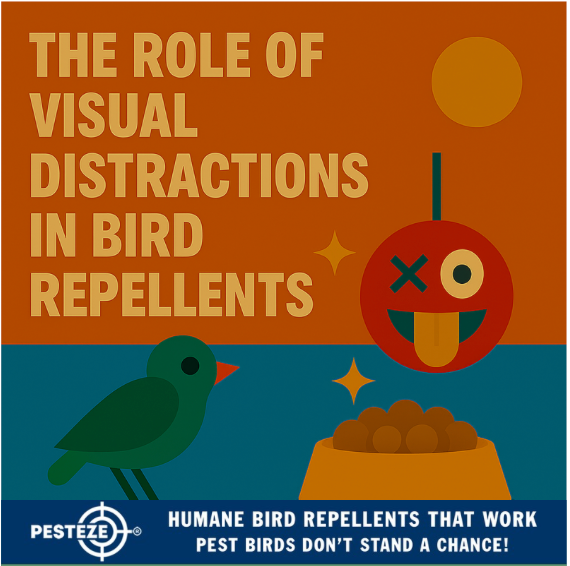THE ROLE OF VISUAL DISTRACTIONS IN BIRD REPELLENTS

THE ROLE OF VISUAL DISTRACTIONS IN BIRD REPELLENTS
SUMMARY
Visual deterrence represents a sophisticated approach to bird control, leveraging avian perception and behavioral mechanisms in 2025.
FEATURES
- Perceptual Science: Comprehensive exploration of bird visual sensitivity and response mechanisms.
- Non-Invasive Control: Methods that effectively discourage birds without physical harm.
- Technological Innovation: Advanced visual deterrence strategies based on scientific understanding.
- Ecological Consideration: Approaches that balance human needs with wildlife protection.
- Adaptive Strategies: Techniques that address multiple bird species and environmental contexts.
GUIDE DESCRIPTION
Visual deterrence represents a sophisticated scientific approach to bird control that goes beyond traditional repellent methods. The complex relationship between visual stimuli and bird behavior provides innovative opportunities for wildlife management.
Birds possess unique visual perception mechanisms that differ significantly from human visual systems. Their ability to perceive ultraviolet light, detect subtle movement, and process visual information creates complex challenges and opportunities for visual deterrence strategies.
Technological innovations in 2025 provide unprecedented capabilities for developing sophisticated visual bird repellent technologies. Advanced understanding of avian visual perception allows for the creation of intelligent, adaptive deterrence systems that effectively discourage bird populations.
Scientific research reveals multiple mechanisms for visual bird deterrence. Reflective surfaces, strategic color applications, movement-based technologies, and intelligent visual disruption techniques create comprehensive approaches to managing bird populations in various environments.
Professional wildlife management demands nuanced approaches that consider species-specific visual perception characteristics. Different bird species respond uniquely to various visual stimuli, requiring sophisticated, adaptive strategies that go beyond simple static visual barriers.
Ecological considerations remain critical in developing visual deterrence approaches. Comprehensive strategies must balance human needs, wildlife protection, and potential environmental impact while creating effective bird management solutions.
- Pukhraj Sharma


Comments 0